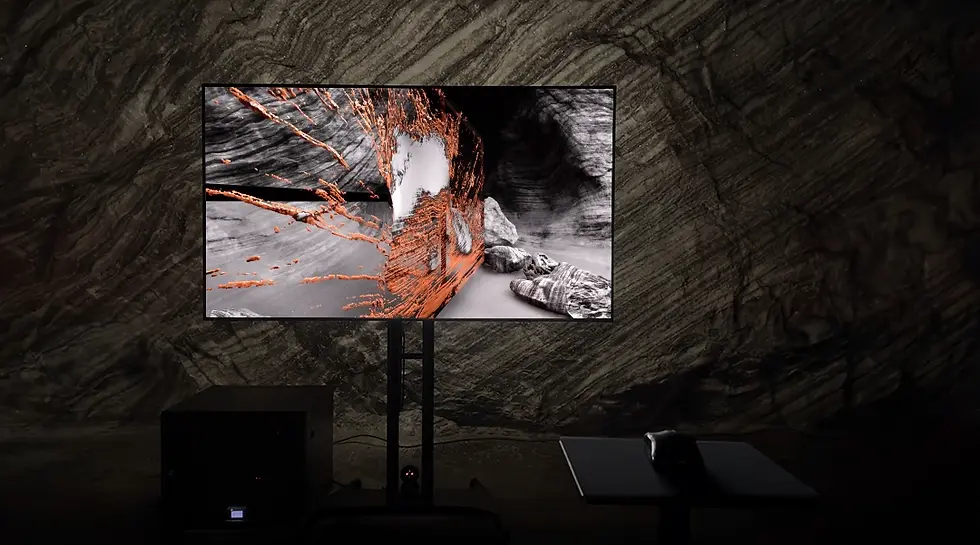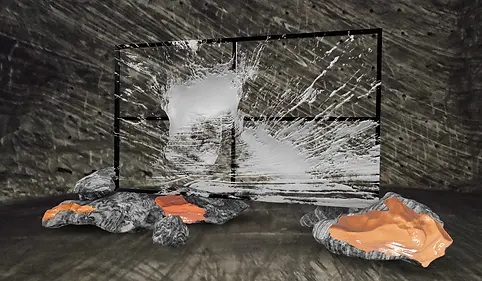CLAUDIA BRAILEANU
Notes on a Salt Landscape

Notes on a Salt Landscape - installation view at Ocnele Mari salt mine, part of Really important help me choose D/L group show curated by Adrian Bojenoiu.
Notes on a Salt Landscape reflects on how the interplay between the physical and digital realms continuously alters our perceptions, revealing a constant shift in meaning and in how we interact with each other and with our surroundings.
Rather than viewing the virtual and physical as opposing realms, it recognizes that our experiences in these domains are deeply intertwined, each continuously shaping and reshaping the other. Reality itself is not fixed but is in a perpetual state of construction and deconstruction, with meaning flowing and transforming between these spaces.
Notes on a Salt Landscape does not seek to replicate the Ocnele Mari salt mine; it draws on specific features of the mine to extend the experience beyond the physical site. By integrating data from the mine—such as 3D scans and digital images of salt formations—and blending them with born-digital materials and interactive objects, the work transcends the physical location, shifting the experience into a virtual realm. This movement between the physical and digital reflects on how meaning is not fixed but is continuously shaped and reshaped as it moves across different contexts and mediums. The augmented reality experience linked to the application loops this digital information back into the physical space, creating new digital objects within the mine while also allowing the experience to transcend its geographical boundaries.
Randomness is embedded within the experience, ensuring that every interaction generates a slightly altered landscape, which participants can further modify. Through this continuous transformation, the work questions traditional notions of representation, emphasizing the fluidity of how we perceive and understand both painting and the world around us.

The environment of Notes on a Salt Landscape has at its center a painting that changes either when the application loads or when the viewer chooses to regenerate the scene. Each time, one of the five different version of the painting appears, accompanied by a new arrangement of 3D scans of salt rocks and fragments of salt walls. The image shown on the painting’s canvas is derived from a screenshot of the virtual salt environment, where the walls are assigned a material based on a shader created in a game engine. The shader uses the geometry and spatial coordinates of the virtual salt mine.
The painting serves as both a representation of the virtual environment that brings to the virtual some of the features of the physical location, and of the code designed to reflect the layered structure of the physical salt mine, which has formed over millions of years. The AR feature connected to the application brings the same version of the painting, as loaded in the app, to the viewer's phone web browser and as a digital object in the physical space. This allows viewers to interact with multiple versions of the painting - on their phones, within the salt mine, and beyond - expanding the experience.
Painting can be viewed as a powerful tool for exploring how the physical and digital realms intertwine. Today, physical paintings can be experienced through digital screens, where they can be touched, magnified, scrolled, and, depending on the file format, rotated, or moved. These interactions transform how we experience and understand painting, as every interaction - whether in a gallery or on a screen - shifts our perception, reshapes our response, and ultimately redefines our understanding of the medium itself.












